Tanakh Hats for Meaning Making: A Multi-Perspective Approach to Biblical Text Study

Howard Deitcher is a Professor Emeritus and former director at the Melton Centre for Jewish Education in the Seymour Fox School of Education at the Hebrew University of Jerusalem. Rabbi Dr. Deitcher serves as the Senior Director of Teacher Institutes at the Melton Centre, Hebrew University, and chairs the UnitEd Advisory Committee. He is a member of the Israeli Centre for Philosophy for Children and has published numerous articles, co-edited five books, and produced teaching guides that are being used in schools in Israel and around the world. His current areas of research include: Philosophy for Children in Jewish Education, Spirituality in the Lives of Jewish Students, and Moral Education in the Lives of Young Children.
This article will describe the approach, highlight its benefits, and present three examples from Tanakh study developed by Jewish educators worldwide.
Benefits of the TMM Hats Approach
Here are several key benefits of this approach for Tanakh education:
- Fosters creativity and innovation: By dedicating time to each hat, students are encouraged to generate new ideas, leading to creative interpretations and a willingness to think “outside the box.”
- Enhances analytical and critical thinking skills: Certain hats focus on gathering ideas and information, while others encourage cautious, critical evaluation. This balanced approach helps students develop discerning thinking skills, offering students practical tools for life.
- Develops emotional intelligence: Several hats allow students to express emotions and intuitions about a topic, acknowledging the role of feelings in Tanakh interpretation, which enhances self-awareness and empathy.
- Improves communication skills: By inviting students to share diverse interpretations, this approach helps them articulate thoughts clearly and listen more effectively to others’ perspectives.
- Prepares students for real-world challenges: The TMM approach teaches students to approach problems from multiple angles, fostering creative thinking and effective collaboration—valuable skills for any career or life situation.
TMM Hats in Practice
To date, we have introduced 12 Torah hats into Tanakh study. Here are descriptions of the most popular ones:
The Pith Helmet – Worn by historians, archaeologists, geographers, etc. The pith helmet reader is an explorer who seeks facts, parallels, and differences with other cultures. She uses ruins and findings, as well as linguistic links with other cultures, peoples, and traditions.
The Psychologist Hat – The psychologist hat seeks to understand the text’s psychological underpinnings. This hat wearer is keen to explore human behavior and character development, as well as psychological development patterns, and family systems.
The Parshanut Hat – This hat examines Tanakh commentaries from a traditional Jewish perspective. This approach explores classical as well as modern commentators’ understanding of the text and is guided by attention to the text’s linguistic style, text-based reasoning skills, and traditional hermeneutic principles.
The Artist Hat – This hat interprets textual meaning using a range of different art forms. These may include visual arts integration, musical interpretation, dramatic representation, poetry and creative writing, multi-media expression, and more. These art forms enable students to interpret texts creatively, adding layers of meaning to Tanakh interpretation.
The Philosopher Hat – The philosopher hat regards the text as a source of truths, both ancient and contemporary. This hat-bearer approaches the text with a questioning mindset, treating it as a springboard for philosophical inquiry and ongoing reflection.
The Zionist Hat – This hat is worn by learners who are committed to a Zionist ideology. These readers believe in the historical, ideological, and national links between the Bible and Zionist principles and view the text as a source of inspiration and guidance for the actualization of biblical values, ideas, and norms in the State of Israel.
The Feminist Hat – This hat analyzes how biblical texts portray women and address issues pertinent to gender. This hat seeks to highlight the voices and experiences of women in biblical narratives, offering a more extensive understanding of the text. It explores the dynamics between men and women, examining how their relationships create and reinforce differences that shape and inform the biblical canon.
Before offering examples of how this approach can be introduced in classrooms it is important to note that we consciously selected the hats metaphor, as it allows students to “wear” multiple hats at the same time. In other words, we encourage students to consider a range of interpretations that add meaning and purpose to their Tanakh study, thereby generating new levels of understanding. Teachers are also encouraged to integrate overlapping elements from different hats in ways that generate and support fresh interpretations.
Examples from Tanakh Study
In attempting to highlight the educational possibilities at hand, we present three different Tanakh sources that invite multiple hat interpretations and thereby invite students to explore new forms of meaning. In order to underline the efficacy of this approach, we have deliberately selected biblical texts that represent different textual genres.
This psalm is the classic description of the sufferings and sentiments of the people who experienced firsthand the grievous days of the conquest and destruction of Jerusalem in 587 BCE. It encourages the reader to behold the tragic sight of a displaced and downtrodden people who shared the burden of the Babylonian captivity after their return to their homeland.
- Pith Helmet: This hat traces the central role of the Temple in the lives of the Jewish people and the national lamenting of a people torn from their homeland. This reading helps students appreciate the historical context in which this psalm was composed, and its role throughout Jewish history.
- Artist (Music) Hat: Over time, this psalm was adopted by various groups to express exile and loss, and inspired works by Bach, Dvorak, Verdi, Don McLean, and Boney M., each reflecting a unique take on its powerful imagery. It offers a memorable image of an uprooted people languishing beside a river, called to make music but unsure how to proceed. Exposing students to the range of adaptations of this psalm allows them to gain a deeper appreciation of its power to shape personal and national identity.
- Psychologist Hat: Beyond the heavy burden of all vital difficulties and limitations caused by the exile, this hat highlights the constant feeling of homelessness and yearning for the homeland, national resilience, and the vitality of memories and losses. This psalm also shares a sense of hope and belief in a better future; although the exiles were unable to sing the songs of Zion in Babylon, they nevertheless did not break their harps in pieces or throw them in the stream. Instead, they hung them on the poplars, presumably saving them for what would surely be a better day.
2. Rut Chapter 1 (narrative)
The first chapter centers on Naomi’s profound loss of her husband and sons. In addition, the theme of loyalty shown through Rut’s choice to abandon her homeland and culture for Naomi is a classic Jewish value that echoes throughout our history. Finally, this chapter highlights the tension between hardship and deep faith in God, female friendship, and survival.
- Feminist Hat: A feminist hat reading of Rut highlights female agency and solidarity. Rut’s autonomous choices and loyalty to Naomi demonstrate women’s power to shape their destinies within traditional structures. Their relationship illustrates female mutual support, while Rut’s acceptance as a Moabite challenges social boundaries, and underscores the importance of inclusivity and respect for diverse identities.
- Zionist Hat: Zionist interpretations emphasize Rut’s deep connection to the Land of Israel. Her choice to join the Israelite nation and work the land serves as an early model of aliyah. The narrative’s focus on Rut’s commitment to the Jewish people and her assuming responsibility for her new family’s future, reflect core Zionist values of land connection and national responsibility.
- Artist Hat: Rut’s story has inspired numerous poets over centuries, with most works focusing on several key themes: loyalty and devotion, female strength, religious faith, the value of family, etc. Students should be encouraged to explore the rich array of poems in this chapter, and thereby appreciate the contrasting and creative voices that these poems have generated over time.
3. Shemot 20, The Ten Commandments (legal)
The Ten Commandments hold fundamental importance in the Tanakh as the divine moral code revealed by God to Moshe at Mount Sinai. These commandments serve as the cornerstone of Jewish law and ethics, establishing basic principles for religious, national, and social values. In teaching the Ten Commandments, educators oftentimes focus on the following areas: the formative role of Moshe’s delivering the Commandments to the Israelites on Mount Sinai, and its impact on Jewish life. In addition, the text’s enduring influence on moral and legal codes throughout Western civilization, as well as its encapsulating core principles that shaped Jewish life throughout history.
- Parshanut Hat: This hat invites students to compare the commandments in Shemot 20 and Devarim 5. One parshanut exercise offers students the opportunity to compare the textual differences between the two recordings of the Commandments and thereby introduces them to a range of meanings behind core Jewish values. This hat records the different contexts of the two texts, as well as the arising questions about Moshe’s role in these adjustments.
- Artist (Visual Arts) Hat: Artistic depictions of the Ten Commandments can enhance our students’ understanding of religious, historical, and cultural messages across different periods, and thereby spark discussions about varying perspectives on biblical narratives and their relevance across time periods and cultures. In that sense, it enhances our understanding of the text and adds new layers of commentary and personal meaning.
- Philosopher Hat: We invite students to divide the Commandments into categories: these could include distinguishing between mitzvot between people and those with God, as well as universal versus national mitzvot. This hat also explores the order of the Commandments and its significance. Finally, we encourage students to examine the recorded rewards and punishments for some of these mitzvot.
Introducing the TMM Hats into the Classroom
- Introduce the TMM Hats concept and guide students through each “hat” perspective, allowing time for individual reflection, small group discussions, or whole-class conversations. Suggest resources that they can use to expand each perspective, thereby encouraging them to deepen their understanding of known interpretations as well as introduce new ones.
- Bring a set of actual hats to class, with the appropriate labels that students can wear when suggesting a certain type of interpretation.
- Briefly study a Tanakh text with the students, and then invite them to individually select two hats that seem most natural and comfortable for them to wear in making this passage meaningful. In certain classes, teachers might ask students to also select a hat that is “uncomfortable” for them to wear when studying this text. They can then work in groups of three or four, sharing with their friends their most “comfortable” hat and their suggested interpretation. They can also share and discuss their most “uncomfortable” hat.
- Encourage students to record their thoughts for each hat in a journal or a shared document. Why did they naturally select a certain hat? Invite the students to share their selected hat and interpretation with the full class using Padlet.
- After discussing the various hats, invite the students to reflect on how the multi-faceted approach deepened their understanding of the text.
- Over the course of several lessons, introduce new hats and resources that the students can “wear” for different types of Tanakh texts.
- Invite the students to prepare creative projects that allow them to demonstrate their understanding through different hat perspectives. Here are several projects that students created: (i) Donning the psychologist’s hat, students prepared a clip wherein they interviewed a group of psychologists and invited them to reflect on complex family relationships in the Tanakh. (ii) Wearing the parshanut hat, students prepared a presentation on a certain Jewish exegete, shared some key points of their biography, and highlighted several of their commentaries and the common elements that they found in these commentaries. (iii) When selecting the philosophical hat, students designed a set of moral dilemmas that faced a certain biblical character and then asked their peers to address these dilemmas and share their thoughts on these texts.
By adapting the Six Thinking Hats to Tanakh study, educators foster an interactive environment that supports multi-layered analysis and a deeper appreciation for Tanakh. This approach not only enhances critical thinking skills but also fosters a deeper appreciation for the complexity and richness of Tanakh. Finally, students learn to appreciate the contrasting views of their fellow students and thus share a myriad of diverse interpretations that reflect the diverse forms of learning and meaning making.

Howard Deitcher is a Professor Emeritus and former director at the Melton Centre for Jewish Education in the Seymour Fox School of Education at the Hebrew University of Jerusalem. Rabbi Dr. Deitcher serves as the Senior Director of Teacher Institutes at the Melton Centre, Hebrew University, and chairs the UnitEd Advisory Committee. He is a member of the Israeli Centre for Philosophy for Children and has published numerous articles, co-edited five books, and produced teaching guides that are being used in schools in Israel and around the world. His current areas of research include: Philosophy for Children in Jewish Education, Spirituality in the Lives of Jewish Students, and Moral Education in the Lives of Young Children.

From The Editor: Winter 2025
It is one of the oldest literary collections ever written and still very much in circulation. Public readings (and celebrations) of its text are practiced in nearly every synagogue in the world in a regular, fixed cycle. It has been analyzed and studied by religious luminaries, academic scholars, and lay people, and has been studied and taught more times than we can count, with hundreds if not thousands of published commentaries. It plays a central role in all of our lives. One would think that by now we would have a pretty clear idea of what content from Tanakh should be taught and how it should be approached pedagogically at various age levels. And yet, a mountain of anecdotal evidence reveals that there is a huge range in what is taught, why it is taught, and how it is taught.

From Consumption to Production: Equipping Students to Create Torah
In the realm of Tanakh education, there is a tendency to focus on the consumption of Torah knowledge, where students engage in the study, understanding, and analysis of sacred texts. While amassing a critical base of knowledge is undeniably essential, I believe that shifting from students-as-consumers to students-as-producers—in which students not only absorb the teachings but also create and contribute their own interpretations and insights that can be shared publicly—is equally essential. How can we teach students to produce a deep analysis of Torah and not just consume others’ commentary? How do we encourage students to think for themselves while teaching other valuable lessons in the process?

Innovating Teaching Tanakh
What I observed one day in my visit to an English Language Arts (ELA) classroom last year opened my mind to completely new ways of teaching Tanakh, leading to greater student engagement.I work at a pluralistic elementary school that emphasizes growth mindset and continued development for each educator. One specific policy that helps educators learn from each other is the requirement to visit at least two other classrooms every semester. This routine fosters a genuine culture of professional growth, where teachers share ideas, observe varied teaching methods, and offer constructive feedback. I’ve always found these observations beneficial, but one visit left a lasting impact on my approach to teaching Tanakh. Stepping into Mrs. Michelle Petrova’s 6th grade ELA classroom, I was greeted with an incredibly vibrant atmosphere.

Teaching the Halakhic Sections of the Torah
Much of the discussions we find about teaching Humash focus on the narrative portions—Genesis, the story of the Exodus, the wanderings in the wilderness. To a large extent that makes sense, as they provide students with their origin stories—so critical for building the foundations of identity—and are inherently interesting, as stories tend to be. That being said, there is another half of the Torah, whose nature is primarily legal. While some skip it intentionally or somehow “don’t get around to it,” for others it is no less important to teach, even though the content often doesn’t lend itself easily to grab and hold the students’ attention. As with any teaching, we must first identify what we want to achieve before we can think about how we want to do it.
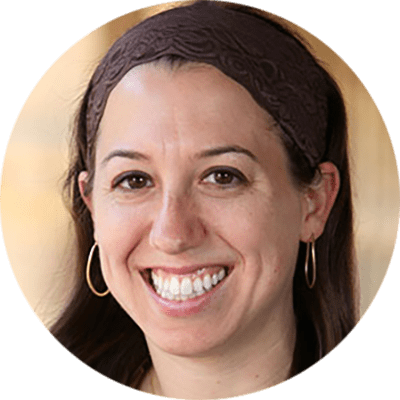
Teaching Tanakh: A New Perspective on Pedagogy
As many teachers of Tanakh know, the Tanakh classroom serves as a crucible for interpreting sacred texts, particularly in theologically and denominationally diverse day schools, camps, and beit midrash settings. The question I wish to explore here is: how do Jewish educators navigate the complex landscape of multiple orientations towards Tanakh that they might find in the seats of their classroom and make sure to empower all their students as interpreters? Central to my own Tanakh teaching, at almost every grade level, in almost every type of day school context, is the realization that my students don’t read Tanakh according to the same orientations or literacy practices, but it would be helpful if they did—at least for the duration of my class.

Tanakh Study and Reader Response
“My students insist on translating every pasuk (verse) into English and then using their translation to answer the questions. How can I get them to work from the makor (original text)?”“When I give in to their learned helplessness and teach them an interpretation, they can’t identify the problem in the pasuk that the interpretation comes to solve, and then they get stuck on the one understanding I presented and won’t consider an alternative. How can I help them think for themselves?” “I want my students to identify with the avot (patriarchs) and imahot (matriarchs) and learn from their example. But they somehow can’t relate to them as role models. What am I doing wrong?”Sound familiar? For years these complaints were a constant refrain from my Tanakh-teaching colleagues.

Vision, Lenses, and Focus: Bringing Clarity to Tanakh Curriculum with Standards
Any Tanakh text, whether narrative or legal, contains an abundance of ideas, elements, and complexities, and has the potential to raise countless questions. How does a school community decide which of them to pursue?Nechama Leibowitz, quoted by Shmuel Peerless in To Study and to Teach: The Methodology of Nechama Leibowitz, wrote that educators have……to decide what to leave out and what topics should not be touched, because it is pointless to tackle a number of different topics and problems superficially or incidentally in a chapter. It is preferable to concentrate on just a few topics, but in depth (p. 15). Standards serve as powerful tools for deliberating about a vision for Tanakh education and for shaping Tanakh curriculum once the school’s vision is clear.
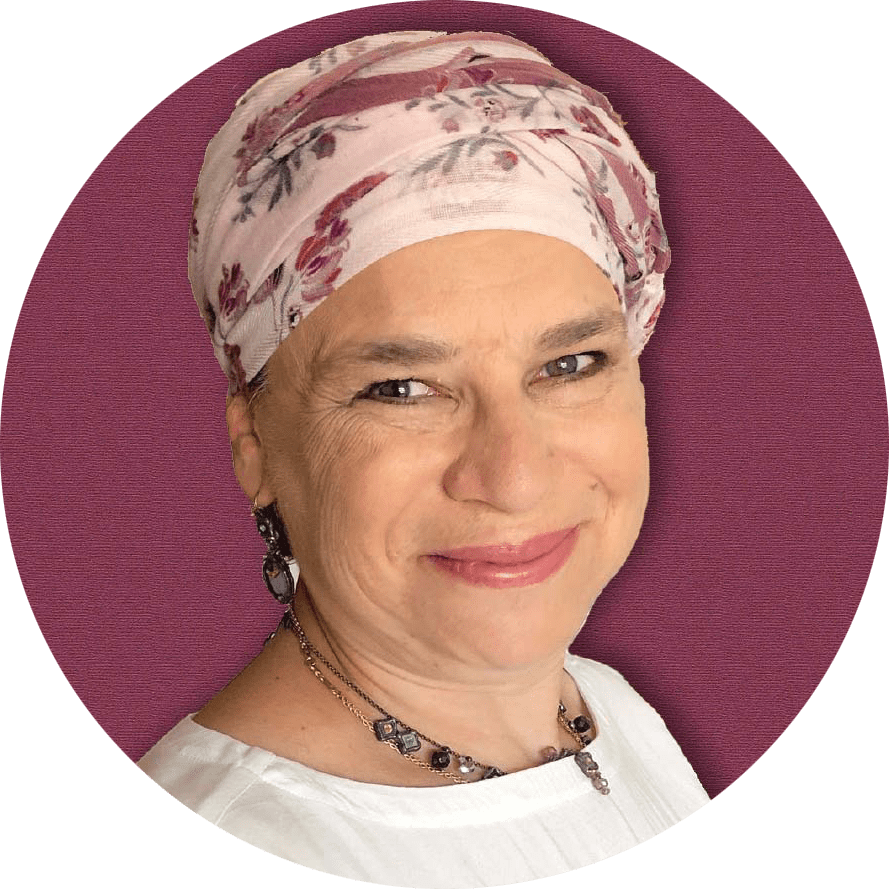
Teaching Tanakh to Weaker Students
In my roles as a Tanakh teacher and an instructional coach, my goal is to inspire Tanakh students to become engaged, proud, and even passionate Jews, fluent in Jewish literacy and deeply committed to the future of Jewish education and community. This goal is daunting under the best of circumstances; when teaching Tanakh to weaker students, it becomes more so. In this article I will outline some of the most ubiquitous challenges that arise from teaching Tanakh to weaker students and offer suggestions for navigating them based on my own experience as well as conversations with other educators and research from the field. I believe that navigating these challenges requires both modifications in practice and shifts in mindset, and I will outline each of them.

Student-Centered Learning in the Tanakh Classroom
For the past decade, educators have been using the term student-centered learning (SCL) but still finding it tricky and challenging to apply to the Tanakh classroom for a variety of reasons. One is the amount of time teachers must dedicate not only to teaching content but also to developing textual reading skills. Another is that teachers might feel reluctant to engage in a pedagogy they feel allows for too much free thinking and not enough respect for the mesorah, classical commentators, and tradition in general. Here we offer tips and strategies for how to introduce SCL into the Tanakh classroom in large and small ways. Differentiation and Social-Emotional Learning Are you differentiating in your classroom? Great! That’s one time-tested way to employ SCL in the Tanakh classroom.

Outside the Box: A Values-Based Approach to Parashat Hashavua
Tanakh in dialogueWhat position does the Tanakh occupy in the life of an early teen? For many, the Tanakh resides in the mental box into which school is commonly placed—a box of academic pursuits, Hebrew language and grammar, Jewish history and Biblical knowledge. There is nothing innately wrong with this, to the contrary, Tanakh study certainly can and does involve these important elements. But a missed opportunity arises when compartmentalisation precludes Tanakh from forming dialogue with the other “boxes” that rise to prominence in the early teen years.Early teenagehood is often marked by questioning and exploration as students begin a journey of seeking to understand that which may have previously gone unquestioned.

Building Tanakh Skills One Step at a Time With Manipulative Materials
“Give a man a fish,” the saying goes, “and you feed him for a day. Teach a man to fish and you feed him for a lifetime.” At Netivot, we have developed a Tanakh program that gives each child the personalized gift of feeding himself for a lifetime. The Montessori method is predicated upon the idea that each child, if provided developmentally appropriate opportunities, will inherently learn and grow and master at each phase of development according to his own individual needs. For this reason, in our classrooms, the expectation is not for children to memorize translations of text “chorally,” but rather to develop individually the skills to translate for themselves. Using key elements of the Montessori method, our students build a series of skills that allow them to tackle pesukim independently.

Bringing Nechama Leibowitz Into the Classroom
The written legacy of Nechama Leibowitz, in her gilyonot and books, has served and continues to serve as the basis for Torah study for many serious students of parashat hashavua, Tanakh, and parshanut. Her teaching methodology, as experienced by one of the authors of this article in 1988-89, in her weekly classes in her apartment in Jerusalem and in her weekly shiur at the Gruss Kollel, served as a model for how to teach Torah. Certain elements have been adapted, but we have found that her principle of encouraging independent thinking and individualized feedback gives students in middle school a personal connection with the text and empowers them to continue in their Torah study with positivity and self- assurance.

Opening the Middle School Window to Midrash
A number of years ago, when I was teaching the sections in Genesis about Abraham and Sarah to a girls’ middle school class, one of my students raised her hand and said, “I don’t like how much is missing in the Torah.” I asked her what she meant and she replied, thinking like a typical middle schooler, “Like, what did Abraham and Sarah talk about at night when they were just sitting around their tent?” After responding facetiously that Sarah probably asked Abraham what he thought about her new burka, I took the moment to answer the class seriously. This was a wonderful opportunity to deeply introduce my students to midrash as one way to fill in the “blanks” in the Torah text, to delve into the “spaces” in the text, and to teach us moral messages with which to inform our own lives.
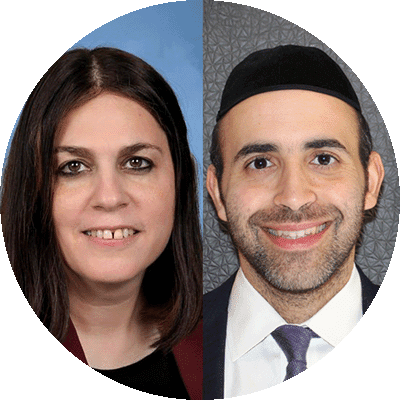
The Barkai Method for Teaching Humash
In the introduction to his book Who Knows Twelve, Rabbi Berel Wein explores a troubling phenomenon: the growing disconnect between the Jewish people and their sacred texts. Whatever the causes for its decline may have been, many Jewish day schools today are attempting to reinvigorate the study of Tanakh, recognizing its fundamental role in Jewish identity and education. Maimonides codified the necessity of studying Tanakh in Hilkhot Talmud Torah (1:7), asserting that it is a crucial component of Jewish life. Today, there is a growing recognition of the need to revive these ancient texts, which hold profound significance for Zionism, community, ethics, spirituality, identity, and much more. One noteworthy example of this revival is the Barkai educational system, developed in Israel by Rav Dan Be’eri more than 40 years ago.
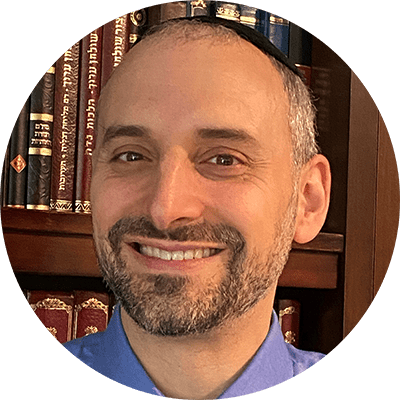
Introducing Sod Into the Tanakh Classroom
In my years of teaching Neviim and Ketuvim, one of my overarching goals was for students to gain an appreciation of why specific commentaries approached the same text differently. I spent significant time on both peshat and derash approaches, highlighting the strengths and weaknesses of each interpretation’s handling of textual issues. One experiment with introducing sod resonated deeply with some of the students and complemented the other work we were doing. I share that experiment here. Sod (literally, secret) is a mode of hermeneutical interpretation that sees the characters and storyline as being symbolic of fundamental themes. Although definitions of sod usually include mysticism, the relation to Kabbalah is only that sod reflects an interpretation that directly addresses giving insight into our relationship with God.

Heroes Within Reach
We read the Bible with the understanding that many of the characters described are our heroes, our Jewish archetypes. We pore over every action, every word, for insight into their thought and character, insight that can inform the same in us. These are not dry annals of the lives of figures from the distant past; these people are as alive today as we are—alive within us, within our synagogues and culture, because we study them so intensively and know them so intimately. Each of us knows the stories so well, that we know what happens between and behind the words.What is a Hero?But what does it mean to consider them heroes? In what sense does, or doesn’t, the Bible portray them as such? And more importantly, how does the Bible express what a hero is, and what makes someone heroic?

Tanakh as a Tool for Building Identity
Jewish tradition holds Torah teachers in high esteem, viewing them as more than just conveyors of knowledge. They are seen as spiritual and moral guides, shaping the character and identity of their students. In The Lonely Man of Faith, Rabbi Soloveitchik emphasizes that the role of the Torah teacher goes beyond intellectual instruction; they facilitate a divine encounter, guiding students toward a deeper connection with God. The Talmud (Bava Metzia 33a) elevates the honor due to a Torah teacher above even that of one’s parents, as the teacher introduces the student to the “world to come” through their instruction—a profound form of giving life. These texts paint a picture of the Torah teacher as a builder of Jewish identity, imparting values that help shape a student’s character and moral foundation.

Tanakh as Our Story
Tanakh is the story of the Jewish people. This basic component of our identity and our tradition has tremendous spiritual and educational power which, unfortunately, is often untapped. In the following essay, we aim to show how this idea of Tanakh as the grand narrative of the Jewish people can be developed into a powerful educational opportunity. In tapping into Tanakh’s central narrative feature, we are not merely making Tanakh more interesting for our students. Since the times of Moses, the Jewish people has known that a good story does more than just pique an audience’s interest. In the words of Rabbi Sacks, “The Israelites had not yet left Egypt, and yet already Moses was telling them how to tell the story. That is the extraordinary fact. Why so? Why this obsession with storytelling?
Reach 10,000 Jewish educational professionals. Advertise in the upcoming issue of Jewish Educational Leadership.


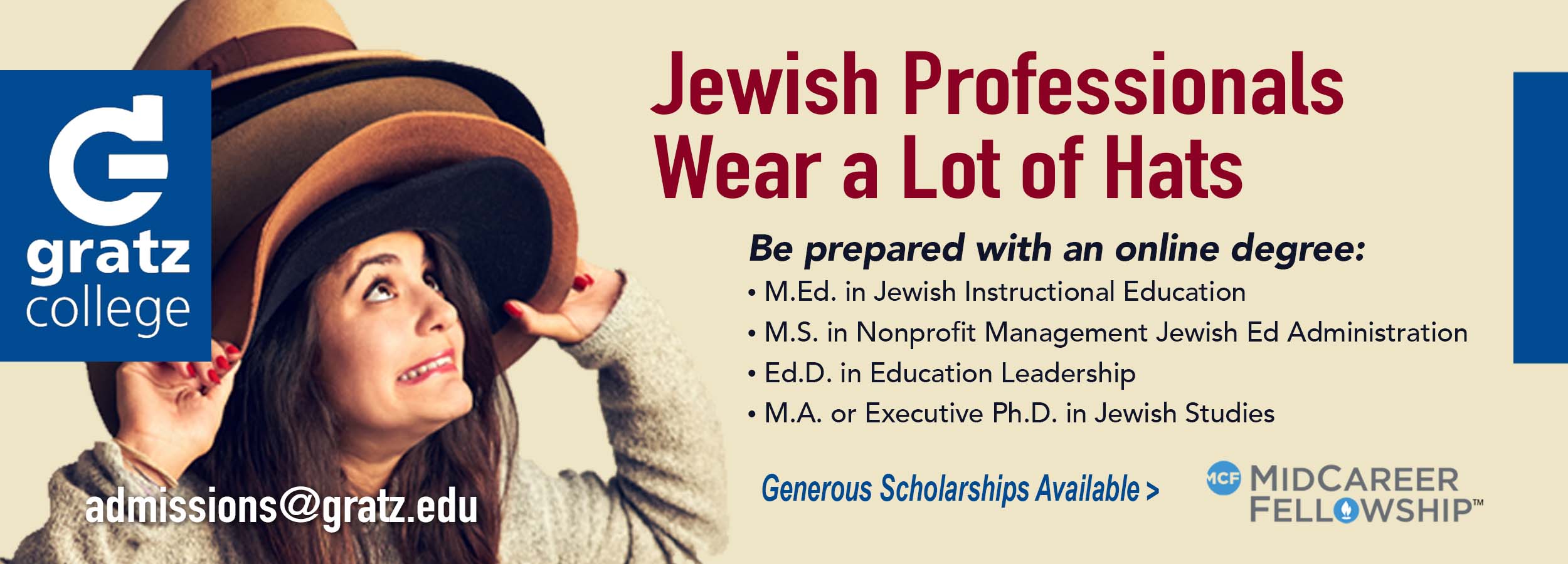

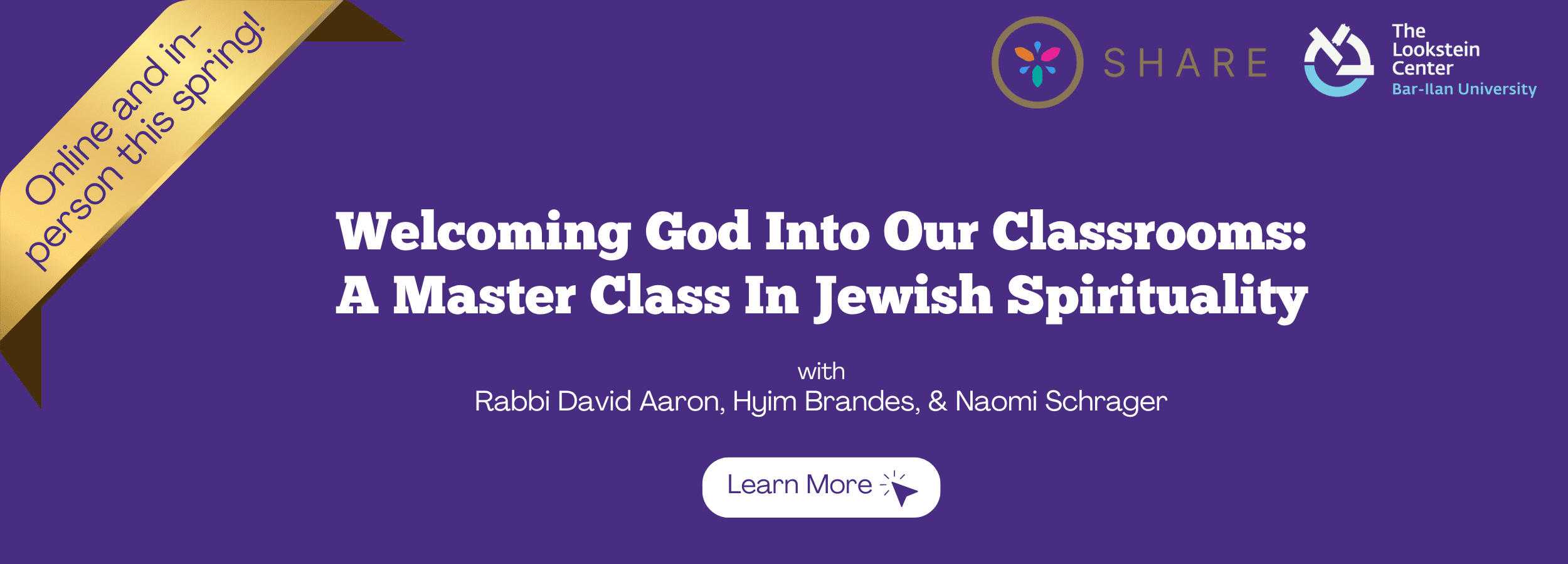


I will try this approach with my class as I think many students with differing abilities and interests will gain much from this approach. The multi-layered approach is very appealing.